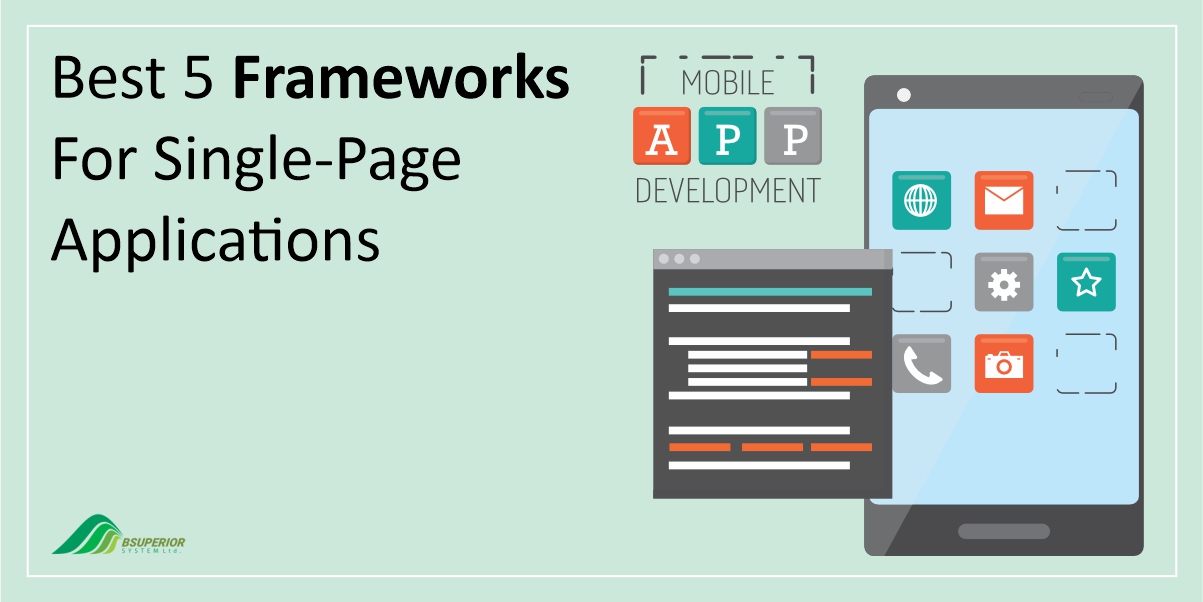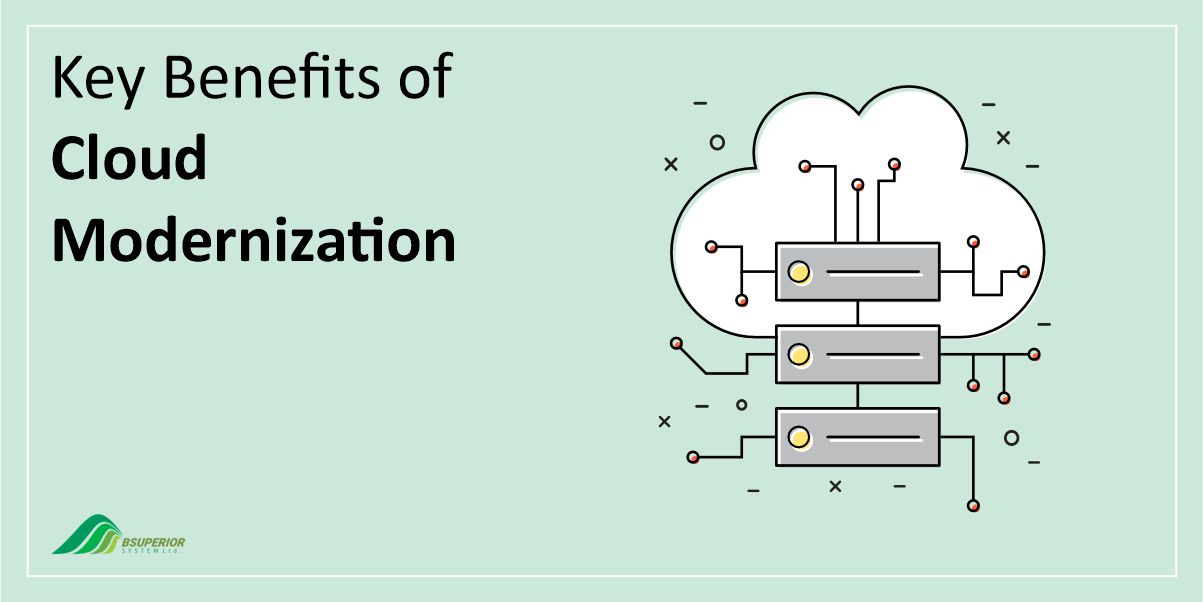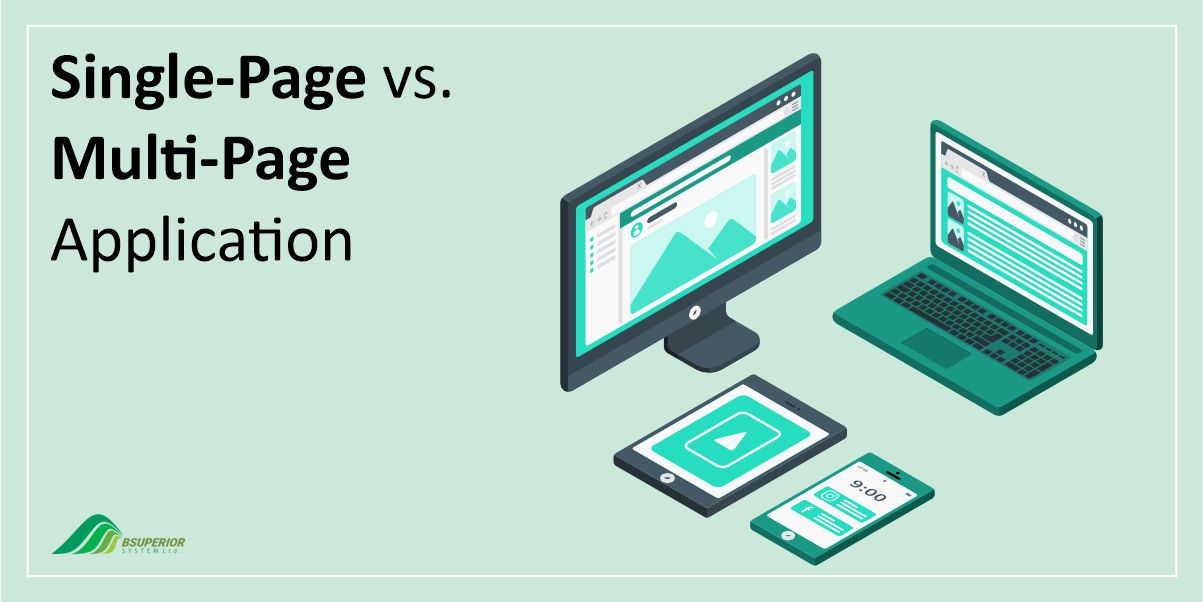What is an API Development? The Things You Should Know
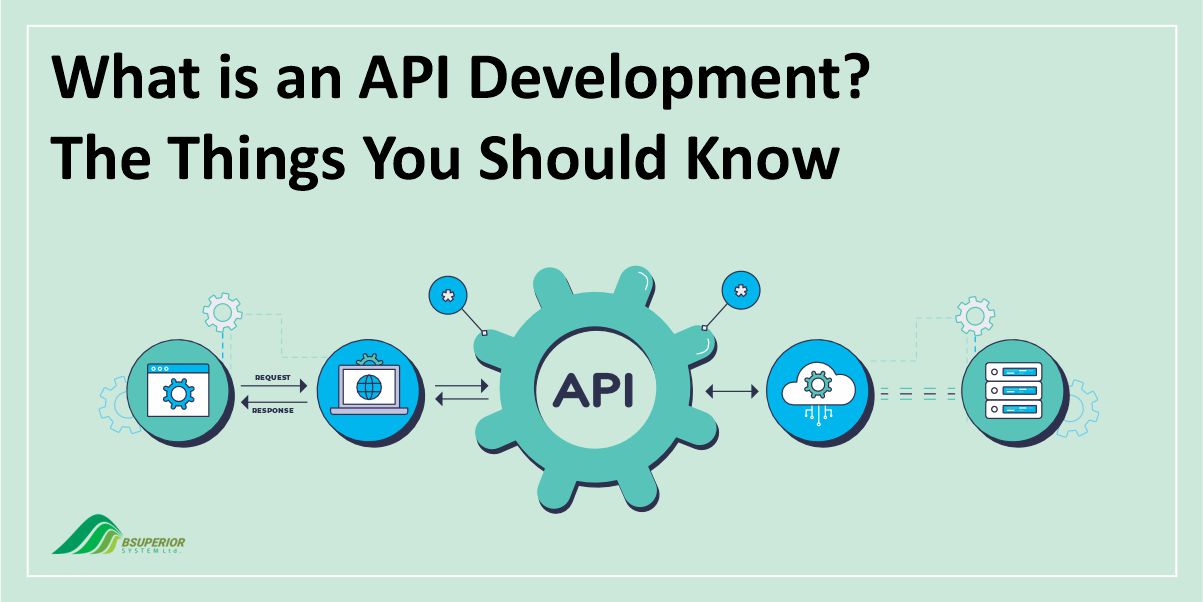
Table Of Content
- API and API Development: What Are They?
- Examples of APIs in Action
- What Does an API Developer Do?
- How Do APIs Work?
- Why is API Development Important For Businesses?
- What are the Different Types of API?
- Developing Better APIs: Best Practices For Success
- Final Words: Tap Into the Power of APIs with BSUPERIOR
Have you ever wondered how apps and websites communicate with each other? While humans use words and gestures, computers rely on hidden tools called APIs.
To put it in simple words, APIs are special codes that different programs can understand. They allow apps and websites to share information and functionality, working together seamlessly.
In what follows, we’re going to explain what APIs are, how they work, and why they’re important. You’ll learn what goes on behind the scenes and why understanding APIs can be beneficial. By the end, you’ll hopefully have a clear grasp of this essential technology in the digital world.
API and API Development: What Are They?
An Application Programming Interface (API) is a set of instructions and specifications that facilitates communication between software applications.
These specifications enable applications to access and use functionalities or data provided by other applications, platforms, or devices. In simpler terms, APIs act as a communication channel between different software programs.
API development is a process that makes this communication possible. It is the process of creating and maintaining these channels, ensuring smooth communication and collaboration between applications.
For example, when you check the weather on your phone, the weather app doesn’t have its own weather station network. Instead, it uses an API to connect to a weather service provider, like AccuWeather or OpenWeatherMap.
This API allows the app to access real-time weather data for your location, displaying it on your screen without needing a separate weather app from each provider.
This is how APIs enable seamless data exchange and functionality sharing between different applications.
Examples of APIs in Action
From logging into your favorite apps to exploring the world online, APIs are silently working behind the scenes to power our everyday digital experiences. Here are some examples you may encounter:
- Seamless Logins: Ever use Google, Facebook, or Twitter to sign in to another app? That’s an API at work, connecting the two platforms for a smooth and secure login experience.
- Instant Weather Updates: The weather box you see on Google search results? That’s powered by an API, fetching live weather data and presenting it conveniently.
- Travel Booking: Websites like Trivago use APIs to access real-time data on flights and hotels, allowing you to compare options and book your trip seamlessly.
Beyond these common examples, APIs play a crucial role in various software functionalities, including:
- Google Maps: Many websites integrate Google Maps using their APIs to provide users with interactive location services and directions.
- Flight Search Engines: Skyscanner, a platform that compares flight prices, makes use of APIs to retrieve data from various airlines and present it to its users.
- Flight Availability Checks: The Sabre Air Availability API allows travel companies to search for available flights based on specific criteria.
These are just a few examples of how APIs work tirelessly behind the scenes, making our digital world more efficient and user-friendly.
By understanding these invisible forces, we can appreciate the vast network of connections that power our daily interactions with technology.
Read more: 10 Best Ecommerce ERP Software in 2024
What Does an API Developer Do?
An API developer works like a bridge builder, connecting an organization’s goals for using APIs to practical applications. They do this by first understanding what the organization wants the API to achieve. They then work with different people involved to create an API that meets the organization’s needs.
To make the API easy and enjoyable for other developers to use, they follow specific design principles called the API-first design. This means the overall design and functionality of the API are the top priority, regardless of how the underlying system works.
How Do APIs Work?
Let’s assume that you’re trying to use an appliance at home. You don’t have to mess with the complex electrical wiring yourself. You simply plug it in, and it works thanks to a standardized system.
APIs operate in a similar fashion, serving as a middleman between different applications (like the plug) to exchange information (like electricity) securely and efficiently.
Here’s a breakdown of how APIs work:
- Client makes a request: An application (the client) wants specific data, so it sends a request through the API. This request is like you flipping a switch on the appliance.
- API collects and prepares data: The API acts as a translator, gathering the requested data and formatting it in a way that both the client and the data source (server) understand.
- API interacts with the server: The API then communicates with the server (the source of the data), similar to how the plug connects to the electrical grid.
- Server sends data: The server responds by sending the requested data back to the API.
- API delivers data to the client: Finally, the API delivers the data to the client application, completing the information exchange.
This might seem complex, but APIs use protocols, which are like pre-defined rules that make sure all applications can communicate with each other seamlessly, regardless of their specific purpose or industry.
This standardized approach allows APIs to act as powerful bridges between various applications and services.
Read more: ERP vs. Accounting Software: A Guide to Help You Decide Which One You Need
Why is API Development Important For Businesses?
In today’s world, businesses are increasingly using APIs to connect their systems and share data. This is known as the API economy. It helps businesses make their services and data more scalable, accessible, and profitable through the use of APIs and microservices.
Businesses are increasingly adopting API development for several key reasons which are explained below.
1. Enhanced Security
First, APIs offer enhanced security by controlling access to important data. Authorized users can only perform specific actions, while unauthorized access is restricted.
This safeguards your systems from various threats like attacks and unexpected traffic surges.
2. Streamlined Development Process
Secondly, APIs enable a streamlined development process. Imagine building an app’s core functionality (backend) separately from the user interface (UI). APIs allow this, resulting in several benefits such as:
- Reuse Code: Develop business logic once and use it for different platforms like iOS, Android, and Web.
- Flexibility: Update the UI using newer technologies without impacting the backend. This makes multi-platform mobile development faster and more cost-effective.
3. Faster Development
Another reason businesses choose API development is faster development. APIs allow developers to skip building everything from scratch. Instead, they can use features and data already built into other apps. This approach saves time and resources, leading to quicker app development.
4. Lower Development Costs
Furthermore, APIs contribute to lower development costs. By leveraging existing functionalities, businesses avoid the need to invest in building everything themselves.
Additionally, automated API testing helps identify bugs early on, preventing costly fixes later in the development process. This contributes to overall cost savings.
5. Easier Integration
One more reason businesses are turning to API development is easier integration. Many companies use various software tools, and APIs allow them to connect these tools into a single system, creating significant value.
While large vendors often offer public APIs, custom or niche software might not have them readily available. A well-designed API for your unique software can give you a competitive edge or streamline internal processes.
6. Better Scalability
Finally, APIs contribute to better scalability. Imagine building complex systems from smaller, independent components that communicate with each other, like building blocks. This is called microservice architecture. APIs enable this approach, allowing:
- Independent Development: Different teams can work on specific components using the most suitable technology.
- Flexible Scaling: Each component can be scaled independently based on its needs. For example, a service experiencing high traffic can be allocated more resources without affecting other components.
What are the Different Types of API?
APIs can be categorized in several ways. Below we’ll group them based on Accessibility and Architecture.
1. APIs Based on Who Can Access Them
Public APIs
Public APIs, also known as external or open APIs, are accessible to everyone with minimal restrictions.
While some require registration and a simple API key for identification, they generally aim for ease of use and encourage developers to find innovative ways to integrate their data and functionalities.
These APIs might have terms of service agreements and limits on usage for free accounts, but they remain open to anyone who complies. Unlike private APIs, extensive verification of user identity or specific use cases isn’t required.
For instance, companies like Google, with their Maps API, offer public access but with limitations. While authentication might be required, and only a limited amount of free usage is available, the primary purpose remains public accessibility.
Private APIs
Contrary to their public counterparts, private APIs (internal APIs) are exclusive to a specific group, typically within a company or institution. Access is controlled, and developers need explicit permission to interact with the data, which is considered proprietary and not for public use.
To ensure security and reliability, private APIs often employ robust logging and load-balancing mechanisms, exceeding the requirements of public APIs.
Additionally, due to the close collaboration between developers and API providers, data formats can be customized and tailored to specific use cases.
Partner APIs
Partner APIs occupy a unique space between public and private APIs. They facilitate data exchange between specific organizations for mutually beneficial purposes while maintaining robust privacy safeguards.
Similar to how you might use personal finance tools, partner APIs enable authorized applications to share specific information about your accounts, like your checking details with a retirement planning app.
However, unlike public APIs, your bank wouldn’t allow your personal website to directly access their data through a partner API. Partner access requires approval and adherence to strict security protocols to ensure responsible data sharing and maintain user privacy.
2. APIs Based on How They Are Built
Monolithic APIs
Monolithic APIs act as single, self-contained buildings. They are the most common for public APIs and are familiar to many developers.
Their structure resembles a relational database or a Model-View-Controller (MVC) application, offering predictable functionality for various needs. They are also usually stable over time as they cater to a broad user base.
However, just like a large building can be difficult to expand or renovate, monolithic APIs can be challenging to scale or update. Everything is interconnected, so even minor changes can have unintended consequences.
Read more: ERP vs. EPM: A Comparison of Features, Functions, and Benefits
Microservices APIs
Instead of a single, large codebase (monolith), microservices APIs are built as smaller, independent components, each serving a specific function.
This approach is often chosen for internal and partner APIs, but it can also be integrated into public APIs as part of an organization’s overall architecture.
The beauty of this system lies in its flexibility. As needs evolve, individual microservices can be easily updated, replaced, or even retired without impacting other parts of the system. This allows for smoother adaptation to changing workflows and business requirements.
Composite APIs
While microservices offer flexibility, they can lead to a high number of individual API calls. Composite APIs address this issue by combining calls to multiple endpoints into a single request.
A composite API acts like a librarian, understanding connections between data and identifying the most efficient way to gather the information you need. This minimizes the number of calls and data transfers required.
Furthermore, composite APIs can bundle common requests, like creating a user account, into a single package. By sending one request instead of multiple, the system delivers the necessary data accurately while reducing overall data traffic.
Unified APIs
While composite APIs combine calls within a single API, unified APIs take the concept further. They focus on bundling related calls across different APIs. This is especially common in the realm of partner APIs.
Let’s work on an example. Picture a financial planning app where you connect several accounts from different institutions. Each institution has its own unique authentication method and data format.
Traditionally, the app would need to send separate API requests to each one, leading to duplicate code and potential security concerns.
Here’s where unified APIs come in. They act as a central hub, allowing your app to send a single request to their endpoint. Secure servers behind the scenes then handle the heavy lifting:
- Mapping Data: They translate the data from your single request into the format required by each individual institution.
- Managing Authentication: They handle the different authentication protocols for each institution.
- Returning Data: Finally, they deliver the combined and formatted data back to your app in a clear and controlled manner.
Developing Better APIs: Best Practices For Success
Developing effective APIs involves following established practices and understanding user needs. Let’s take a look at a few important points to remember.
1. Choosing Architecture
The first step in building a successful API is selecting an appropriate architecture. There are two main factors to consider when selecting the best architecture for your API:
- Functional Requirements: These cater to your users’ needs. Instead of designing your API based on your internal operations, gather information on how your end users will interact with it.
Your API should provide options that align with your clients’ workflows, not your back-end processes. - Non-Functional Requirements: These address your API’s own needs, which are influenced by your application’s underlying technologies.
These considerations include factors like ease of development and testing, security measures, scalability, and the overall API lifecycle management.
2. Comprehensive Documentation
Clear and comprehensive documentation is crucial throughout your API’s development and lifecycle. Overall, it serves two vital functions:
- Internal Reference: As your team builds the API, detailed documentation provides a valuable reference guide to ensure that everyone stays on the same page and understands design decisions.
- User Guide: For external consumers, accurate documentation allows them to grasp the API’s capabilities and integrate it seamlessly into their applications.
Start documenting early, capturing not just technical details but also higher-level architectural choices. Leverage Architectural Decision Records (ADRs) to record the rationale behind key decisions like security, frameworks, and functionality.
This fosters transparency and consistency within the team, and can also be presented to external developers for better alignment with your API design philosophy.
3. API Gateways
API gateways offer several advantages for developers and users of APIs. They are indeed a single entry point for clients that simplifies access and interaction. Unlike API proxies, they provide additional functionalities beyond just forwarding requests.
One key benefit is the ability to combine different API technologies. This allows developers to choose the most suitable framework for each specific context within the API.
For instance, an API gateway might expose user-facing resources through a RESTful API for its web interface, while internally utilizing a SOAP API to communicate with the enterprise inventory system.
This approach enables users to interact with a user-friendly and well-documented interface while using specialized APIs for internal operations.
4. Security Without Sacrificing Ease of Use
Security is an essential aspect of any API, but it should never come at the expense of user experience. Authentication processes that leave users frustrated (like those exceeding 5 minutes) hinder usability.
Instead, consider utilizing token-based authentication methods, which offer a strong balance between robust security and user-friendliness. This method provides secure access without requiring complex login procedures and thus strikes a healthy balance between the two priorities.
5. Rigorous Testing
Frequent testing is vital throughout API development. This helps identify and address issues as features are added, and safeguards against potential security vulnerabilities.
Fortunately, a wide range of API testing tools are available, including popular options like Postman, SoapUI, Katalon Studio, and Swagger. These tools cover various scenarios and streamline the testing process.
For optimal results, use real data whenever possible. Ideally, this data should be ethically sourced and representative of real-world usage.
When testing, favor dynamic assertions in code over hardcoded values. Dynamic assertions offer greater flexibility and are less prone to causing production bugs if values change.
Final Words: Tap Into the Power of APIs with BSUPERIOR
APIs, the invisible bridges connecting applications, are revolutionizing the way businesses operate and collaborate.
Think about the apps you use daily – weather, traffic, or even food delivery – they likely tap into APIs to deliver data and functionality seamlessly. Now imagine taking advantage of this power within your own organization.
The question isn’t if, but how to harness the true potential of APIs.
This is where BSUPERIOR steps in. We are a leading company specializing in custom-built, cutting-edge, and secure API development. We go beyond simply creating APIs. We understand the unique challenges and opportunities faced by businesses today.
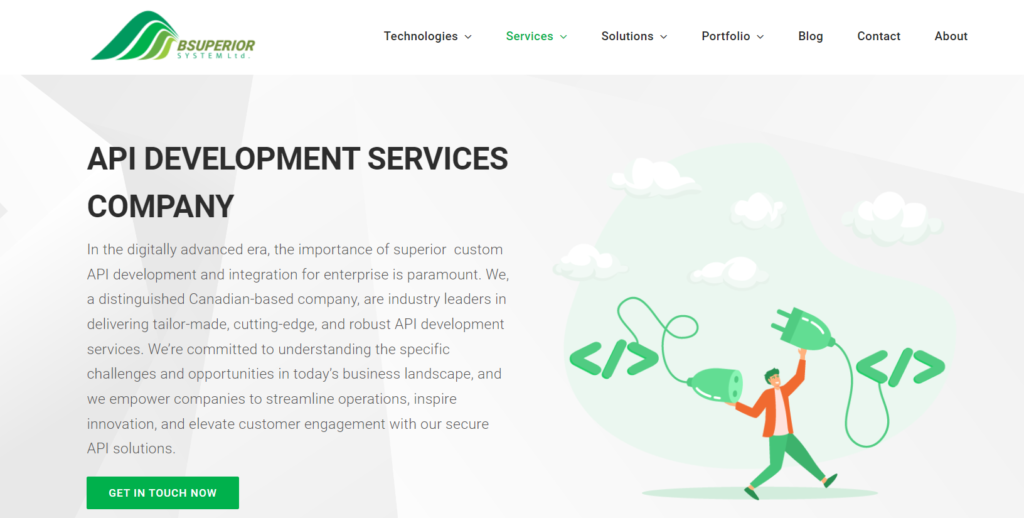
Our team of experts can help you:
- Maximize the benefits of APIs to streamline operations, drive innovation, and elevate customer engagement.
- Navigate the complexities of API design and architecture to ensure optimal performance and security.
- Develop robust and scalable API solutions tailored to your specific needs and goals.
So, if you’re ready to unlock the power of APIs, contact us today and let BSUPERIOR take care of your API development.
We value your input and believe this content may enhance our services. However, it's under review. If you see room for improvement, please use the "Report an issue" button below. Your feedback helps us excel.
Contact us today at –– and speak with our specialist.


